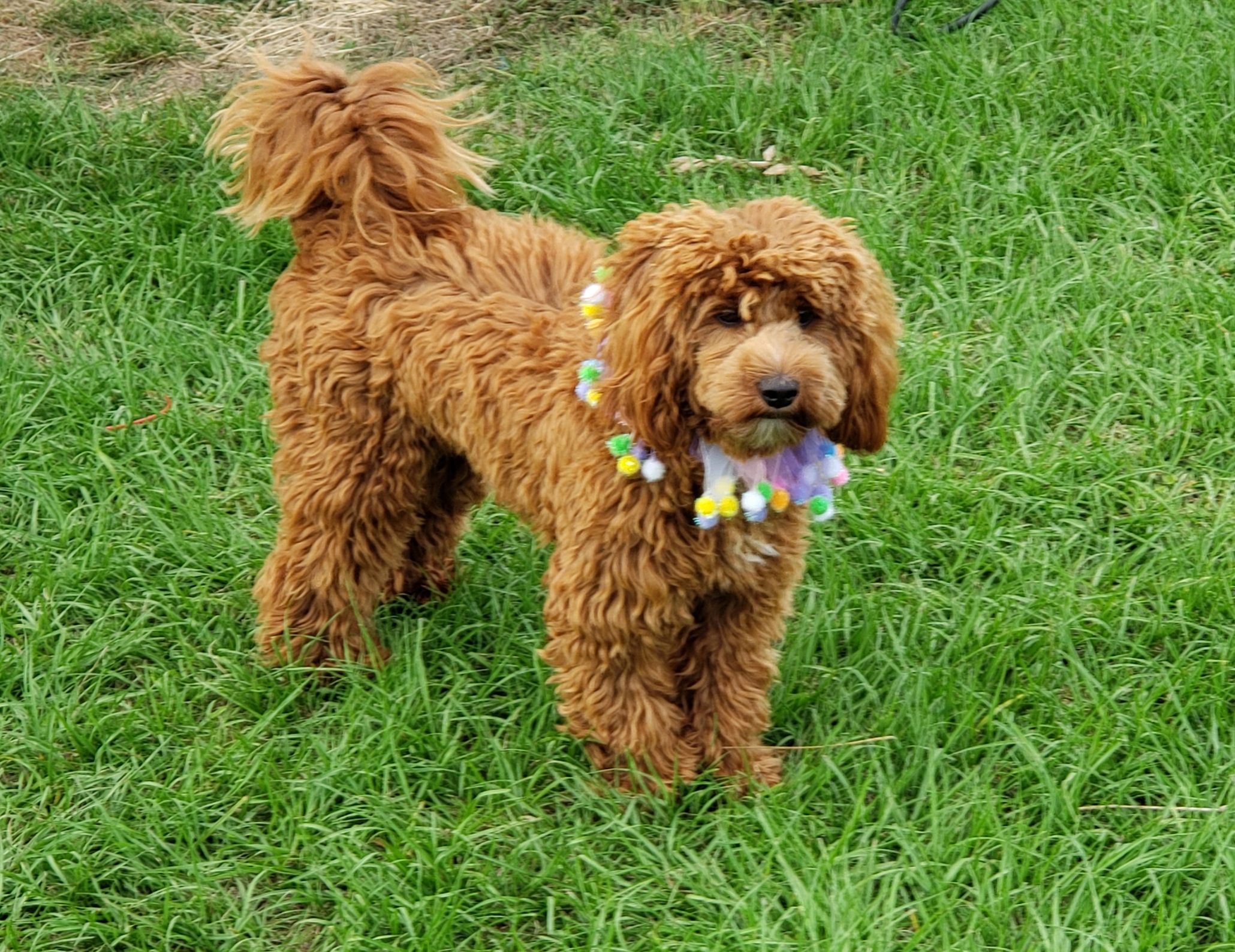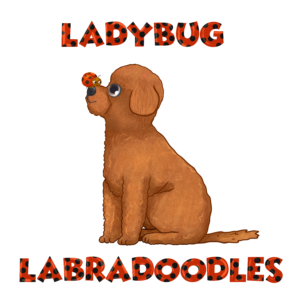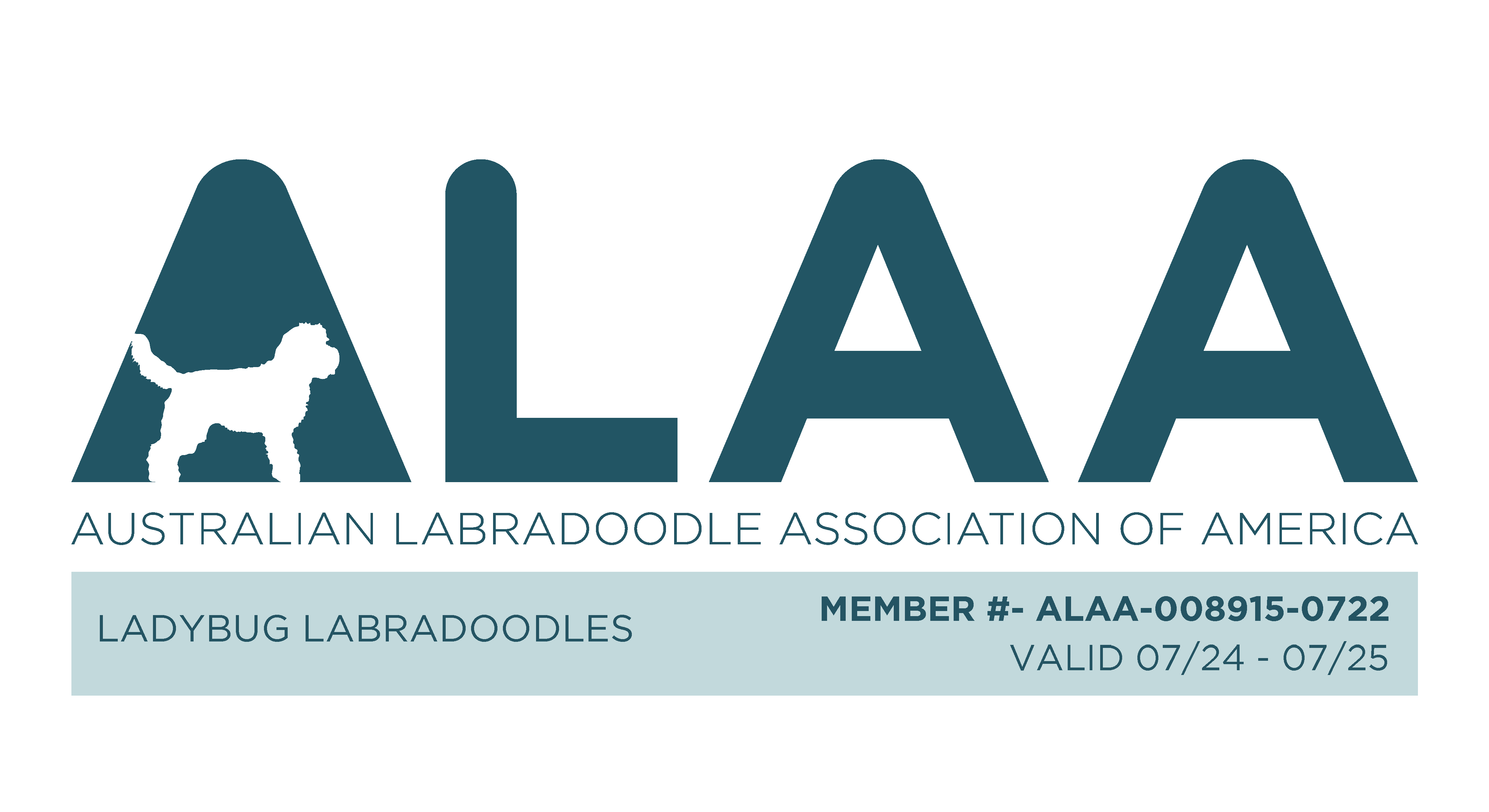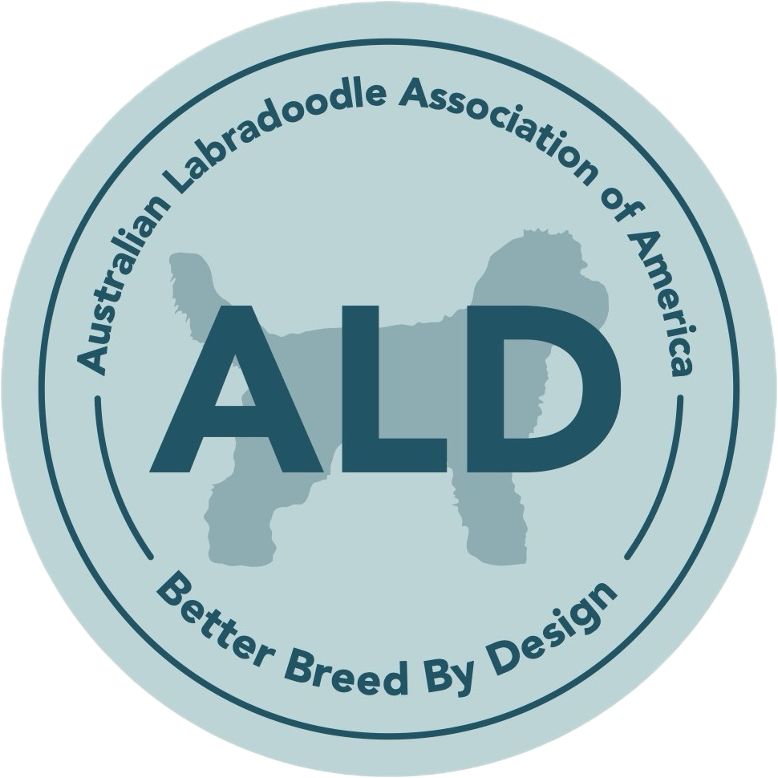Labradoodle Characteristics
There can be real differences between Multigenerational Labradoodles and first cross (F1) Labradoodles (Poodle to Labrador Retriever). Multigenerational Labradoodle puppies quite often cost more than other Labradoodle puppies. Predictability as a result of breeding for color, coats that are non-shedding, and allergy friendliness is usually more dependable in Multigenerational Labradoodles. Selective breeding programs have certainly enhanced the genetic positives of the Labradoodle. We have found that most positive temperament and behavioral characteristics found in Labradoodles has come from the practice of selective breeding stock.
The Multigenerational Australian Labradoodle is known for outstanding intelligence and trainability, low allergy coat, low to non-shedding coat, and lack of odor. The breed loves the company of people and excels as a companion for those with disabilities, visual impairments, physical therapy, young children and the elderly. Our puppies are socialized at a young age and introduced to many different things.
F1 Labradoodle puppies technically should exhibit more hybrid vigor (healthiness) as two completely unrelated breeds have been crossed. Coats can vary from short and shaggy, to long and shaggy, wiry, very curly, or flat. F1 puppies lack the predictability of Multigenerational Labradoodles.
Second-Generation (F2) Labradoodle or backcross puppies result from an F1 Labradoodle bred back to a Poodle. This is done when the desired coat has not been achieved. These coats may not be suitable for those with allergies and sheds. In crossing back to a Poodle, the breeders are trying to get a coat that will be more predictable relating to non-shedding characteristics.
Multigenerational Australian Labradoodle puppies were first bred in Australia in 1989. Many years of selective breeding have gone into the development of their coats. It’s a better breed by design with decades of breeding multigenerational Australian Labradoodles to other multigenerational Australian Labradoodles. These coats may be the best choice for allergy sufferers. Multigenerational Australian Labradoodles consistently produce wavy to curly coats which is great for those wanting a non-shedding, hypoallergenic companion. Ours are wavy. Their hair is silky soft and repels dirt and water.
Miniature Multigenerational Australian Labradoodles are up to 25 lbs and not over 17”, whereas mediums are 26 – 41 lbs and between 17 – 20” and standards are 42 – 65 lbs and 21 – 24” and not over 25”.

Feeding Process
Ladybug Labradoodles are fed Royal Canin (Poodle formula) dry kibble 1 cup a day and the mom’s are fed the puppy formula as soon as they are pregnant and until after the puppies are weaned. The puppies will start on the puppy formula somewhere around 7 weeks. When ready to eat solid food, we will begin feeding moistened kibble and “free feed” until fully weaned, between 6-8 weeks old. After weaning, we feed dry kibble according to weight and age as shown on the bag. You can also free feed. Click here for the suggested feeding guide. Food requirements may vary for individual puppies. From 8 weeks to 6 months, divide the daily amount and feed 2-3 meals in a 24-hour period if not free feeding. After 6 months, divide the daily amount and feed 2 meals in a 24-hour period if not free feeding. If free feeding, measure the entire daily amount and put it into a dish and allow your puppy to eat at-will over the course of a 24-hour period. This method of feeding may lead to obesity so you will need to pay attention to the amount of food consumed. If you want to change the food the puppy is eating, click here for the procedures.
Grooming
A grooming demo video is on the ALAA website and is very informative. Please click here for the ALAA Grooming Manual. Ensure that groomer is aware of your expectations regarding ear and nail care. Bathe your doodle on an as needed basis. When bathing the dog, ensure that no soap gets in the eyes. If this occurs, rinse immediately with cold water. Take special care to rinse thoroughly after the bath. Soap left on a dog can cause skin and eye irritation. Dry with towel and hair dryer. When the pets coat gets wet (rain, snow, etc.), dry with towel and hair dryer while brushing to help prevent matting. We use the Bone Dry dog towel and Royal Furz comb and brush.
Check water daily for cleanliness and sufficiency.
Crates should be cleaned once weekly. This helps with maintenance of pet hygiene.
Brush your pet twice weekly with a slicker brush, then with a comb. This also serves as a bonding activity for both the handler and pet. As your puppy gets older into adulthood, comb then brush your pet daily to ensure no matting.
Teeth should be brushed twice weekly, preferably before or after coat brushing or give a dental cleaning snack. We give DentaLife.
Check and trim toenails as needed.
Ear care Check and clean ears twice weekly with a cotton ball and dog ear cleaner. Ear wipes, similar to a baby wipe or top Performance Pro-ear Professional ear Cleaner. Click here for more information.
Review commands with a dog twice weekly by rewarding with treats. This serves to reinforce overall training and is another opportunity for bonding.
Play time with dog should be done daily. Labradoodles are a highly active breed and need play opportunities regularly for health and weight management.
Reward desired behaviors with treats. This serves as a means to encourage these activities. Never crate as a disciplinary action. The crate should serve as a safe haven only. Click here for the dog care list.
Forms
Contract and Health Limited Warranty
Ladybug Labradoodle’s Security Clause
Toys
The toys that our doodles like most are balls, tug of war stuffed animals with squeekies, bones to chew on, and puzzles with treats in them.

Diseases
https://www.avma.org/news/questions-remain-canine-respiratory-disease-cases-fall and
https://vethospital.tamu.edu/announcements/.



